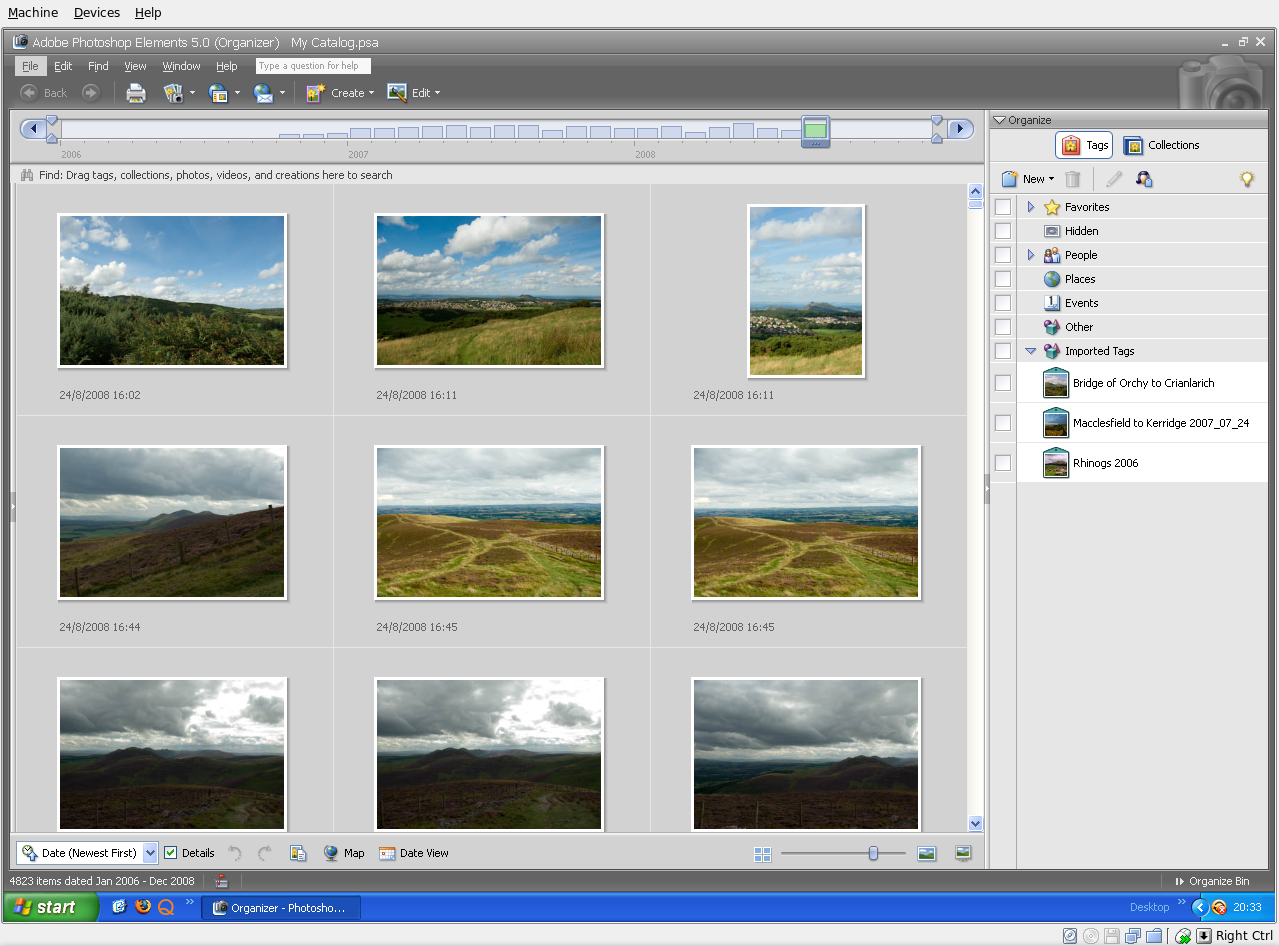Things that I like about VirtualBox OSE
6th September 2008Now that VirtualBox 2.0 is out with its 64-bit operating system support among other things, the version included in Ubuntu 8.04, OSE 1.56, is looking that bit older. Nevertheless, there remains a lot to like about the version that I have been using.

For one thing, its Shared Folders functionality doesn’t trip up Photoshop Elements like VMware does. VMware so hobbled Photoshop’s ability to save back to the Linux file system that it had me looking at the WINE route and I got to use GIMP for a while. VirtualBox brought me back into the Photoshop fold and I seem to like the results that I can get with Elements better than those from GIMP.
Another nicety is the way that guest OS desktops can be resized to fit in a maximised VM window. For this to work, you need VirtualBox Guest Additions in place in the virtual machine but it works very well when all is in place; my experience is with Windows XP. Full screen is on tap too once you use the Host+F combination; the right hand control key is usually the Host key by default. If there is any criticism at all, it might be that seamless application windows are not available in OSE 1.5.6.
Linux kernel changes can upset things, but drivers don’t take too long to appear and you can always take matters into your own hands anyway. It’s a far cry from the blithe indifference of VMware and the need to resort to vmware-any-any patching to get things under way again.
All in all, VirtualBox OSE treats me very well. Guest operating systems may seem sluggish at times but it’s never enough to annoy or seriously impede usage. It’ll be interesting to see if a newer version of VirtualBox makes it into Ubuntu 8.10.
Setting up openSUSE in VMware Workstation
12th November 2007It should have been as straightforward as following the instructions on the openSUSE website but a bug in VMware Tools derailed things on me. The usual procedure would have you starting by selecting Install VMware Tools from the VM menu before popping into the virtual machine to do the rest. Once binutils, gcc, gcc-c++, kernel-source and make are in place, next steps should involve using YaST to install the RPM for you to run the vmware-config-tools.pl script from the terminal.
However, a bug in compat_slab.h puts a stop to any hopes of installing the vmhgfs component. That’s needed if you want to enable the shared folders feature; looking in /mnt/hgfs then would get you to any shared folders Everything else will be there but why miss out on one piece of functionality when it come in useful?
Having found a useful thread on the subject, here’s my way forward: it is as the expected procedure up to the point of installing the RPM. With VMware Tool installation on a Linux guest, you have two options: use RPM as described or use the compressed tarball. The latter seems the better course. Extract the contents into a folder and navigate to that folder. When there go into vmware-tools-distrib/lib/modules/source and extract the file vmhgfs.tar. Proceed into the resulting vmhgfs-only contained wherever you put it and perform the following edit of compat_slab.h:
Change
#if LINUX_VERSION_CODE < KERNEL_VERSION(2, 6, 22) || defined(VMW_KMEMCR_HAS_DTOR)
to
#if LINUX_VERSION_CODE <= KERNEL_VERSION(2, 6, 22) || defined(VMW_KMEMCR_HAS_DTOR)
After that, recreate and replace vmhgfs.tar before issuing the following command in the terminal window while in the vmware-tools-distrib directory: ./vmware-config-tools.pl (anything prefixed with "./" picks up the file from the current working directory rather than where system binaries are stored). A kernel compilation will be involved but all of the defaults should be sensible. Hopefully, all will work well after this.
Update: I am left with a number of outstanding issues that I need to resolve. Lack of internet access from the VM is one of them and a constant forgetfulness regarding the nationality of my keyboard (it’s British) might be another. In the interim, I have removed VMware tools until I can spend some time setting these to rights. Internet access has returned and British keyboard layout is being interpreted correctly in the meantime…